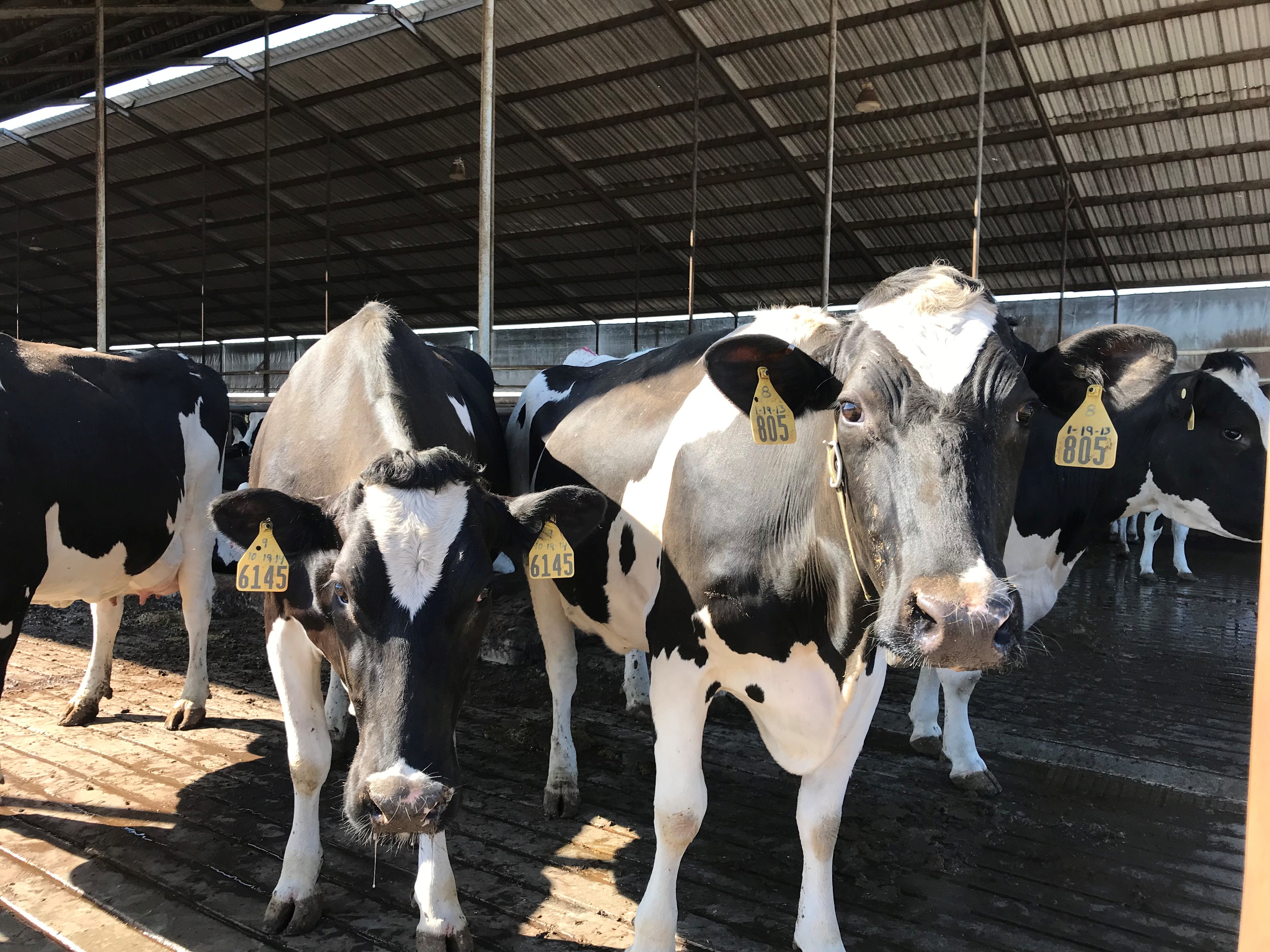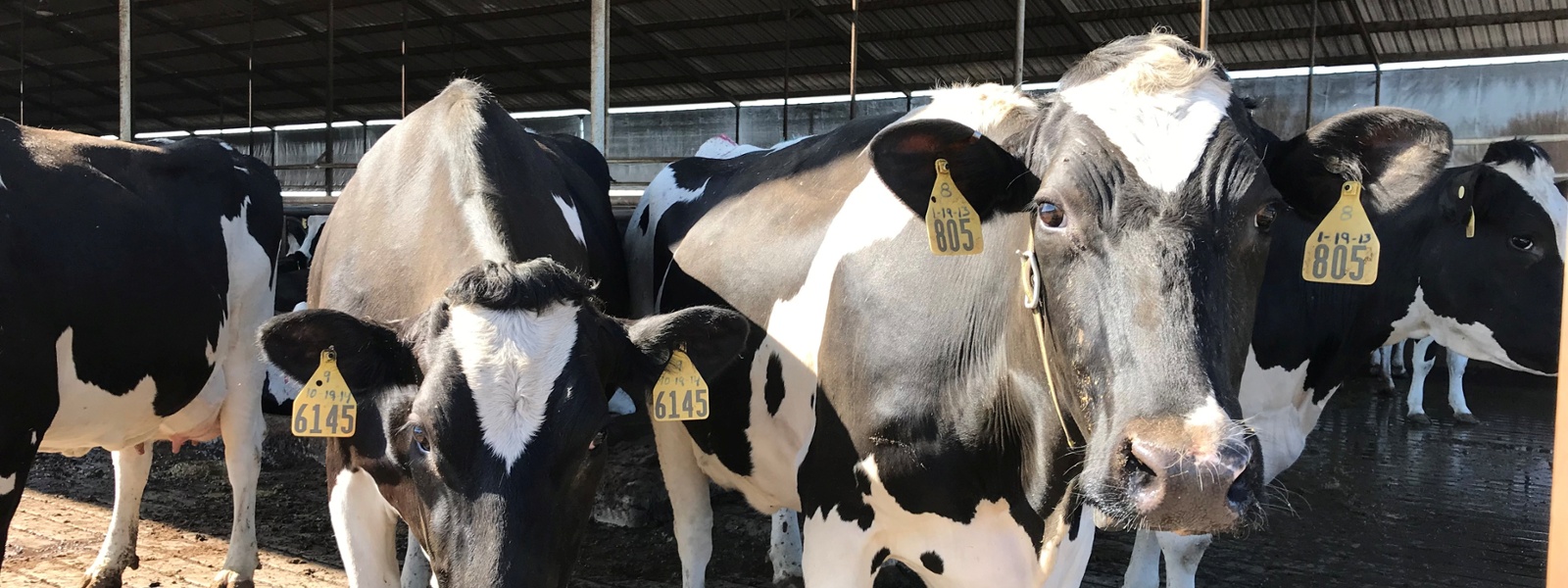Dairy farmers look for new methane emission solutions


By Ching Lee
With a construction boom of methane digester projects on California dairy farms in recent years, milk producers have begun to reduce a powerful greenhouse gas emitted by the manure coming from their cows.
Now they must tackle the methane coming from the front end of their animals. Cow burps emit what’s known as enteric methane, and the race to reduce it represents a new frontier for the dairy industry.
The California Dairy Sustainability Summit in Davis last week shed light on some of the latest innovations in feed, genetics and vaccines showing promise. The annual conference highlights achievements California dairy farms have made in environmental sustainability and some new planet-smart efforts.
Various speakers stressed the importance of public and private backing. Just as financial incentives have helped to get more methane digesters online, funding support is needed to drive progress in understanding enteric emissions and how to curb them.
California aims to cut livestock methane emissions by 40%, or 7.2 million metric tons, below 2013 levels by 2030.
Frank Mitloehner, an air quality specialist at the University of California, Davis, said California dairies are already close to achieving half the state’s methane reduction goals and will likely exceed them with reductions of 7.6 to 10.6 million metric tons of greenhouse gases, mostly methane, in coming years.
A “sizable reduction” will come from attrition, he said, as the state is expected to lose nearly 1% of its dairy cows annually. Most of the current methane reductions are through manure management, with dairy digesters accounting for more than half of the 7.2 million metric tons of reductions.
Digesters capture methane from covered manure lagoons on dairies. The biogas is then cleaned and turned into renewable natural gas, which can be used to power vehicles and generate electricity and, more recently, hydrogen.
As of August 2023, 161 dairy digesters were in operation in California, according to the U.S. Environmental Protection Agency. Though the oldest operational digesters date back to 2004, most of the state’s digesters are new, with 120 built since 2021.
Spurring much of the growth is California’s Low Carbon Fuel Standard, an incentive program aimed at reducing use of fossil fuels. It allows biogas to earn credit for being a low-carbon fuel. At the federal level, the Renewable Fuel Standard program provides additional incentives.
Reducing methane is crucial to slowing global warming, Mitloehner said, because if the potent greenhouse gas can be squelched aggressively, dairy production can reach a point of climate neutrality, or not add warming to the planet.
Much of the buzz relates to new findings on how to cut enteric methane, which accounts for 51% to 67% of greenhouse gas emissions from dairies, according to data from the Food and Agriculture Organization of the United Nations.
Feed additives have been in development for several years. Use of natural extracts such as essential oils and tannins can change the microbial composition in the rumen and may reduce methane by about 10%, Mitloehner said.
More effective are so-called methane inhibitors, which suppress the enzymatic formation of methane in the rumen. Such feed additives have been able to cut emissions by upwards of 30%, Mitloehner said.
Though he’s “quite bullish” about the effectiveness of some of the additives, Mitloehner said he’s also very cautious, as they have not been studied extensively and companies trying to commercialize the products lack data on the feeds’ impact on cattle health. He advised dairy farmers to “look for real evidence before you buy something and feed it to your cows,” adding that they should consider not just how well the feed reduces methane but also impact to milk, meat and animal welfare.
“Any kind of performance issues are nonstarters,” Mitloehner said.
Without authorization from the U.S. Food and Drug Administration, feed manufacturers cannot label their product with claims that it can reduce methane. The approval process remains slow, said Mark van Nieuwland, vice president of DSM-Firmenich, which makes Bovaer, a feed supplement the company says can reduce methane emissions in dairy cows by 30%.
Van Nieuwland said there needs to be more investment in research. Getting a new feed ingredient on the market requires tolerance studies to show the product is safe. There are few facilities globally that can do this type of work, and they have a long wait, he added.
Changing legislation can help, said John Tauzel, senior director of global agriculture methane at the Environmental Defense Fund. He pointed to Senate Bill 1842, the Innovative FEED Act, which aims to streamline approval of feed additives.
“Right now, any product that hopes to have an enteric reduction claim is considered a new drug,” he said. “That’s a seven-year, multimillion-dollar pathway.”
Even after a feed product is approved, van Nieuwland said barriers remain in getting enough farmers to use it due to the cost. He said there needs to be a way for producers to show the benefits of what they’re doing, so they can earn incentives to help pay for their efforts.
Another feed ingredient scientists have studied is a certain red seaweed, which has shown enteric methane reductions of up to 90% in some situations, said Charles Brooke, an expert in enteric methane at the nonprofit Spark Climate Solutions. More research is needed to understand its safety, he said, as the seaweed produces bromoform, which can be toxic at high levels. Feeding the seaweed to cows has shown bromoform residue in the milk. Understanding what the safe limit is remains a barrier to commercializing the product, he added.
“I haven’t seen a lot of great efforts in directly addressing those barriers,” Brooke said.
Beyond feed, one of the more notable discoveries related to methane emissions in recent years has been in genetics. Scientists now understand that methane is a heritable trait, and there are tests that can show whether a cow is a high or low methane producer. This was not known five years ago, Mitloehner pointed out.
The revelation has put focus on selective breeding as a cost-effective and long-term strategy for reducing enteric methane. Producers could potentially bolster methane reductions by combining the use of genetics and feed additives, Brooke said.
“I think we have that capability and the possibility, especially here in the U.S.,” he added.
Vaccination is another area getting attention. Scientists continue to evaluate the possibility of administering a vaccine that can allow an animal to mount an immune response against methanogens, or methane-producing bacteria.
Researchers also continue to explore probiotics and their ability to shift the energy flow within the rumen away from methane and toward meat and milk.
“That has been a prime goal of ruminant microbiologists everywhere for the past 60 years: How do we get that efficiency into meat and milk?” Brooke said. “It still is top of mind for most of us looking at solutions because that’s going to help with cost, and that’s going to help with adoption.”
(Ching Lee is an assistant editor of Ag Alert. She may be contacted at clee@cfbf.com.)




